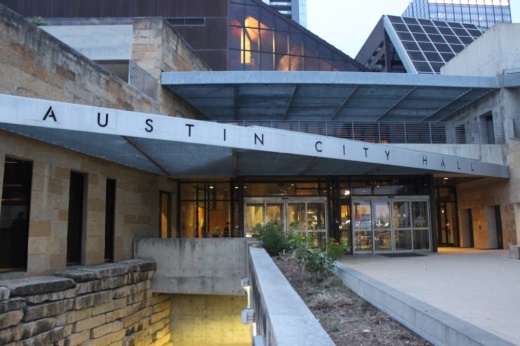"Even though Austin is still the envy of the state of Texas in terms of economic activity, we have slowed down, and I think it’s beginning to impact our revenues," interim City Manager Jesús Garza said.
The big picture
City Council received a look into Austin's finances Feb. 27 as the midpoint of the city's 2023-24 fiscal year approaches.
More comprehensive budgeting updates and forecasts are expected in April, but for now staff outlined some recent trends and suggested that city officials may need to begin planning for a tighter spending plan this year.
That outlook comes in part thanks to dwindling sales tax collections, which have grown several percentage points below FY 2023-24 projections. Financial staff said sales tax returns are already $8.5 million below estimates—a gap that could nearly double by the fall.
“We continue to see really flat sales tax revenues. Now the good news of that is, flat is better than down, right? ... But the bad news is, is we built our FY ‘24 budget assuming 4% sales tax growth. So flat’s not good enough," Chief Financial Officer Ed Van Eenoo said. "If our sales tax remained flat against that 4% assumption that we made in the budget, we are going to have a budget deficit that we’ll need to deal with before the end of the fiscal year."Property tax revenues are also coming in below expectations given appraisal protests, although such adjustments typically take place after council's annual budget approval.
On the other side, Austin-Travis County EMS has made significant progress on its billing backlog and brought in nearly $6 million more than expected. Austin has also earned an extra $3.6 million from interest given today's higher rates.
Also of note
City officials will also have to deal with the end of one-time federal relief funding allocated in the height of the COVID-19 pandemic. That includes more than $188 million from the American Rescue Plan Act and about $75 million more from grants and other sources.
Those dollars have supported a historic investment in homeless response as well as child care, food and housing security, workforce development, and cultural programs over the past few years.
However, all of Austin's ARPA money must be dedicated by the end of this fiscal year and spent by the end of 2026, meaning many of those initiatives will soon be left without a future funding source.
“We are heading towards a fiscal cliff with our ARPA spending," Van Eenoo said. "[A $263] million influx of funding into our budget that allowed us to elevate services in a number of areas, and over the next three years, that funding’s going to start dropping off."
Staff are confident Austin will have all of its money allocated this year and spent before 2027, Van Eenoo said, but City Council will have to choose how to handle the exhaustion of those funds.
"We’re not going to leave anything on the table, but there are going to be some critical policy decisions coming up during that period of time about this elevated level of spending and whether or not, when that money starts to dry up, if we’re going to go back to pre-COVID levels of funding or if we’re going to try to maintain those elevated levels of spending. And if so, how does that look relative to our ability to do so, relative to our revenue?” Van Eenoo said.
Quote of note
Mayor Kirk Watson said the sales tax trend and end of ARPA support, coupled with several years under a state-imposed cap on local governments' annual property tax hikes, led the city to its current position.
"Austin’s economic prosperity along with some pandemic-related factors helped to paper over many of the challenges of budgeting under a tight property tax cap. Now, we’re beginning to understand the fiscal reality of those caps at the same time sales tax growth slows," he said in a February newsletter.
What else?
While officials will wrestle with bigger budgeting questions in the future, council members said Feb. 27 officials should prioritize maintaining Austin's tenant support programs amid a possible fiscal crunch.
Staff said nearly $10 million is available this year for Austin's tenant stabilization efforts, all of which will likely be spent before this summer. More than $2 million was already used this year before the program closed due to initial high demand.
Interim Housing Director Mandy DeMayo said the community's need for assistance "far outpaces" available resources, as in many other major U.S. cities.

“We’ve got to keep continuity in these programs. The stop and start nature is not good for the people receiving and asking for the funds, it’s not good for ... the people that are administering the funds," he said. "We want something a little more steady and stable, and the fact that the program has already closed to new applications and is likely to run out of funding before the end of the fiscal year is a real concern.”
Council member Vanessa Fuentes agreed that city tenant programs must be right-sized and kept afloat.
“Clearly, given the demand that we have in our community, given the housing crisis that we’re in and given our commitment to prevent homelessness, it is incumbent on us to have a permanent fund dedicated for emergency rental assistance," she said.





